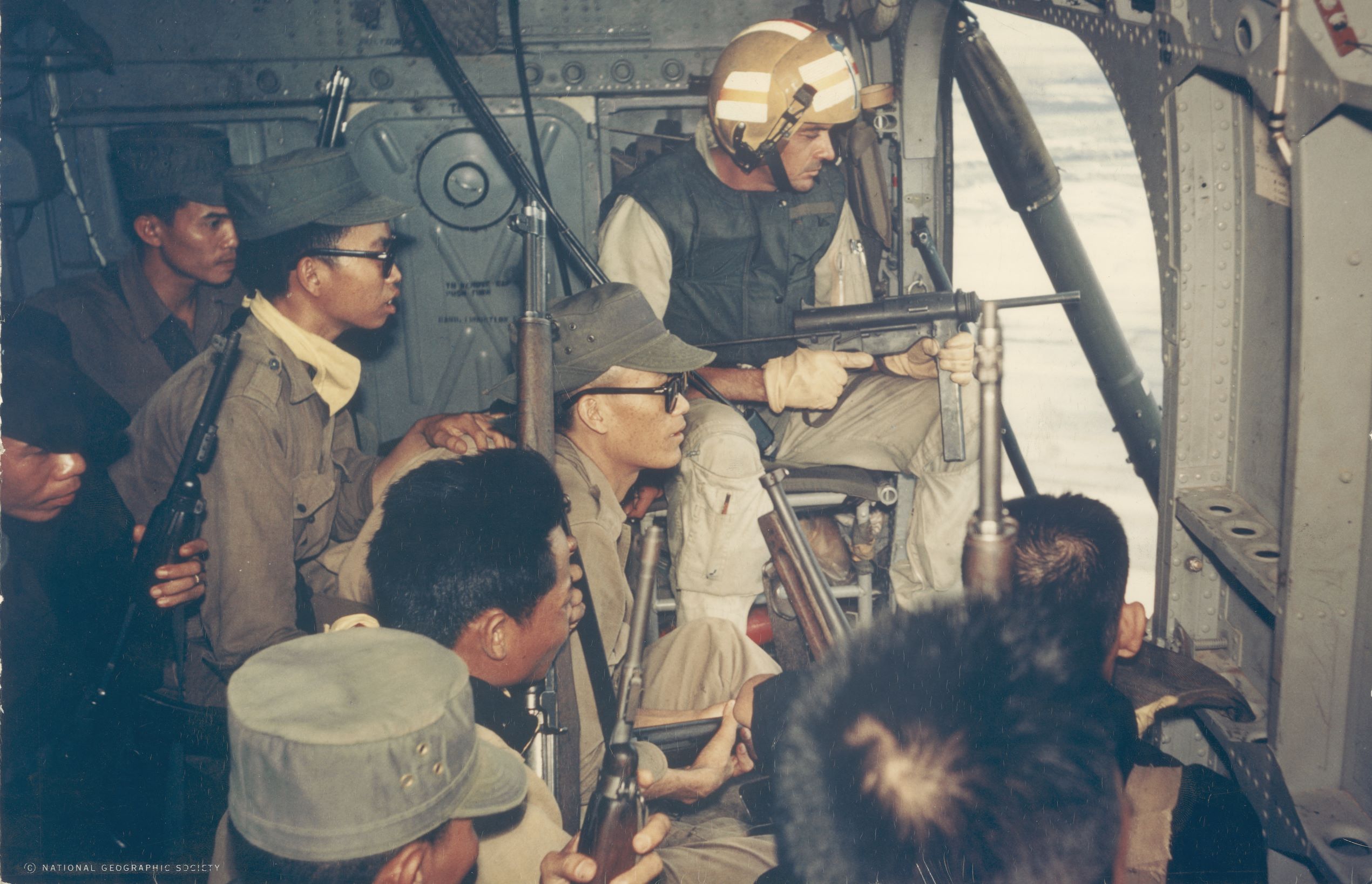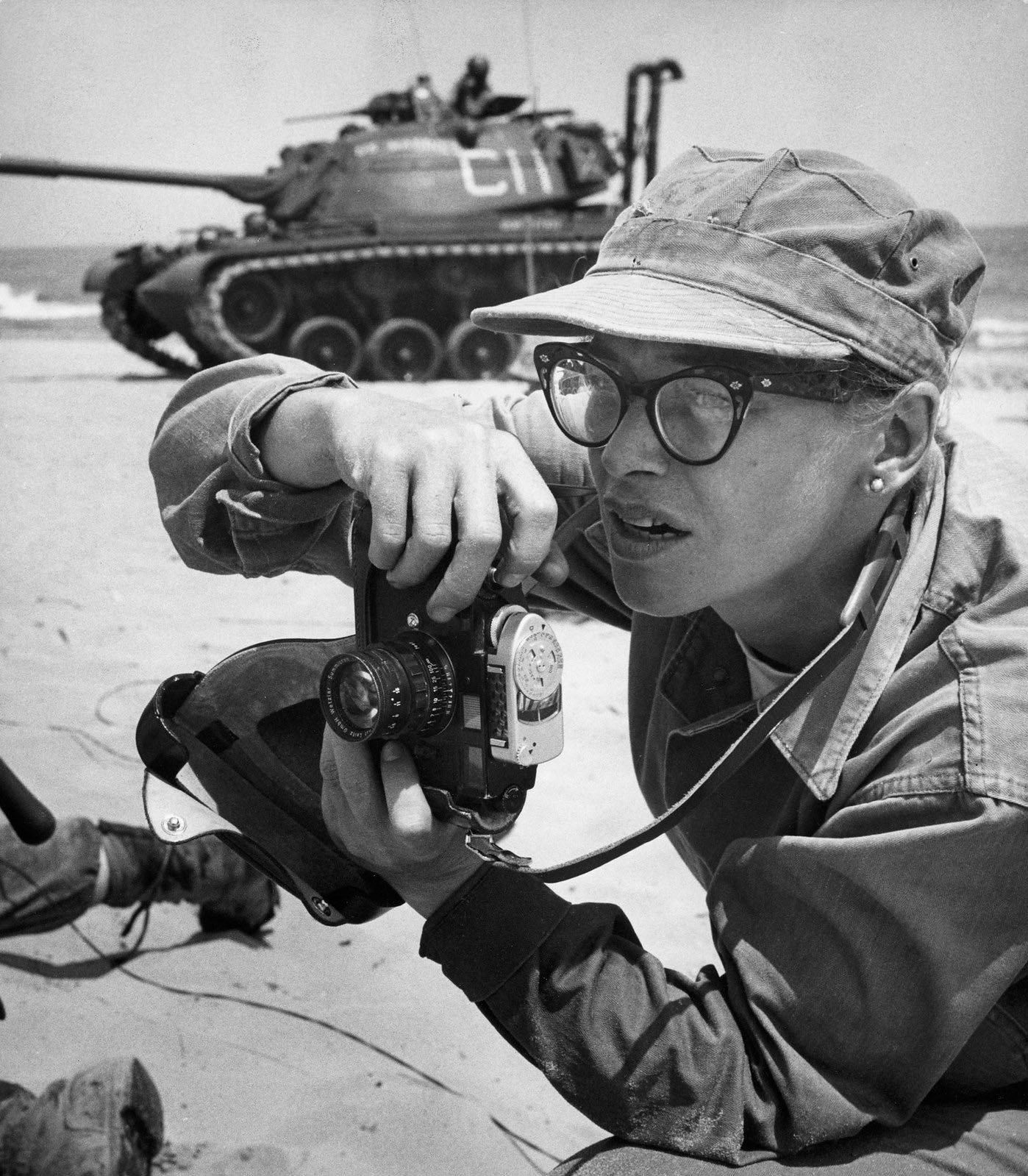Authors:
Historic Era: Era 9: Postwar United States (1945 to early 1970s)
Historic Theme:
Subject:
Fall 2023 | Volume 68, Issue 7


Authors:
Historic Era: Era 9: Postwar United States (1945 to early 1970s)
Historic Theme:
Subject:
Fall 2023 | Volume 68, Issue 7
Editor's Note: Cultural critic and historian Lorissa Rinehart writes about art, war, and politics. She adapted the following from her recently published book, First to the Front: The Untold Story of Dickey Chapelle, Trailblazing Female War Correspondent. We thank the Wisconsin Historical Society for preserving a collection of Chapelle's photos, many of which appeared in their book, Dickey Chapelle Under Fire: Photographs by the First American Female War Correspondent Killed in Action, by John Garofolo.

She didn’t have much time. They would be leaving soon. In the next room over, she heard the names of familiar drop zones as the commanders debated where they should jump after the sun went down. Their tone anticipated enemy resistance. The chop of an incoming helicopter thundered outside as she lit another cigarette at her typewriter. She had to get the story out.
“Dear Hobe,” she wrote her editor, “This letter is a try at reporting to you what I’ve been doing and thinking. Mostly for my sake, I’ll try to put down in words a point of view from which I’ll be drafting copy later this week. The subject matter of the copy will be some 5,000 people on our side, the Vietnamese Airborne Brigade. I can’t imagine that most Americans know they exist; no reporter (man or woman, Viet or US) was ever permitted to go out on their operations before. Yet the five weeks—no, it’s six now—that I’ve spent with them have been as unforgettable an adventure as I have ever had in my life.”
In the autumn of 1961, Georgette “Dickey” Meyer Chapelle made seven jumps with the Vietnamese Airborne Brigade, slept seventeen nights in the field, came under fire seven times, and marched over two hundred miles through head-high jungles and knee-deep streams. She patrolled the Ho Chi Minh Trail along the Cambodian border with them; photographed them fighting with bravery and valor; watched them die in agony, and got up the next day with the survivors to begin their battle again.
Blond, petite, and hailing from a sleepy suburb outside Milwaukee, Wisconsin, Dickey might have seemed an unlikely figure to be making camp with South Vietnam’s finest, let alone to be the first reporter of any gender to have the honor of being credentialed with the Airborne. But fighting men had welcomed her since World War II when, with equal parts grit and compassion, she covered America’s armed servicemen giving their last full measure of devotion at Iwo Jima and Okinawa.
Because of her